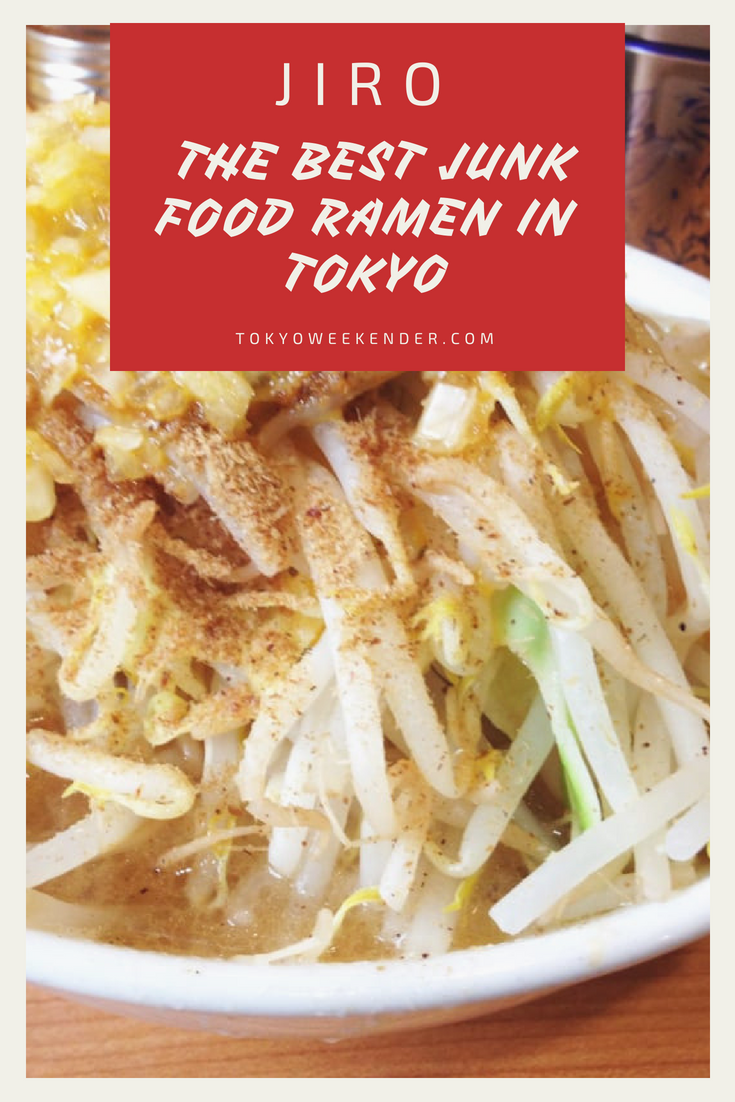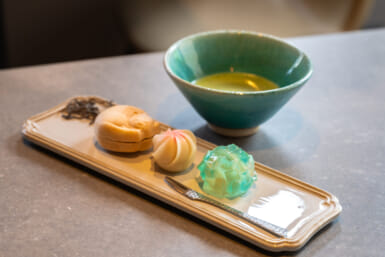Japanese ramen noodles are a thing of beauty: as far removed as possible from the Styrofoam packs of instant cup noodles we all ate in college, to something that is true cuisine. If it’s possible for a Japanese ramen shop to get a Michelin star, you can be just as sure that there is also ramen on the opposite end of the spectrum. I’m talking pure unadulterated junk food. The kind of thing that would be at home in an American carnival or flea market near the deep-fried Twinkies. Ramen Jiro has been something of an institution in the Tokyo area since the 1960s, yet somehow it has largely escaped the attention of many foreign residents.
Ramen Jiro is Part-Franchise, Part-Religion
There are over 30 locations in the greater Tokyo area, with other Ramen Jiro establishments spreading from Kyoto all the way to Sapporo. Among Japanese people, opinions of the chain differ greatly: of all the people who try it, half are said to hate it. Others, so called “Jirorians,” become hooked on the stuff, and make up the insane lines that form near these little shops on any given day. It is recommended that you line up at least 10 to 15 minutes before a store opens, otherwise be prepared to wait upwards of 40 minutes to an hour.
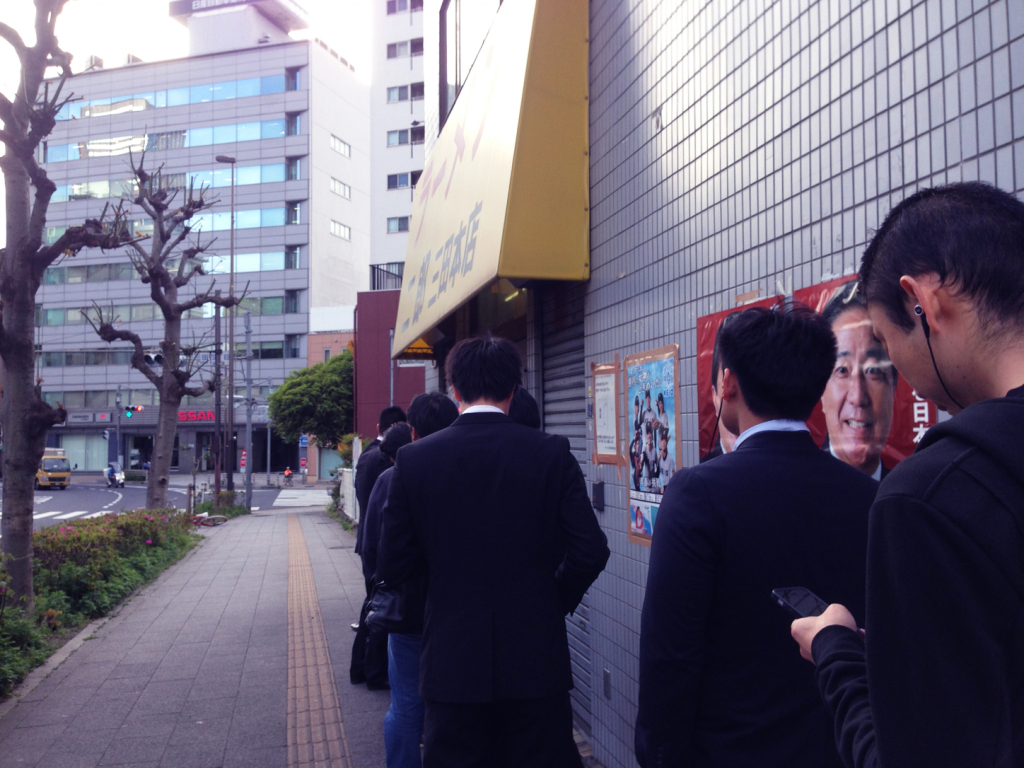
Lining up outside Ramen Jiro Mita Honten
Each shop is small and only has counter space for about 10 to 15 people. Some places have tables, but these are generally only available for families or large groups, and only at the discretion of the staff. There are many rules like this at Jiro, such as: how to line up, how many orders you can make at once, eat as quickly as possible, and clean up your area (with a supplied wet towel) when you’re finished.
So, What Brings People to Their Local Ramen Jiro?
For some, it’s a challenge. It helps that Jiro’s portions are very generous for the price. A small ramen will usually run you about ¥700, paid in advance at a vending machine inside the shop. However, what is called the “small” is in actuality quite enormous, approximately 300g of soup, noodles, and toppings including chashu (roasted pork). And as for the large …well, don’t even think about ordering it. For experienced Jirorians only, this is a whopping 450g to 500g of ramen. You can also buy toppings separately, such as onions, eggs, or cheese. The ramen is very rich and flavorful, partially due to the exceptionally high amount of oil and fat used in Jiro ramen.
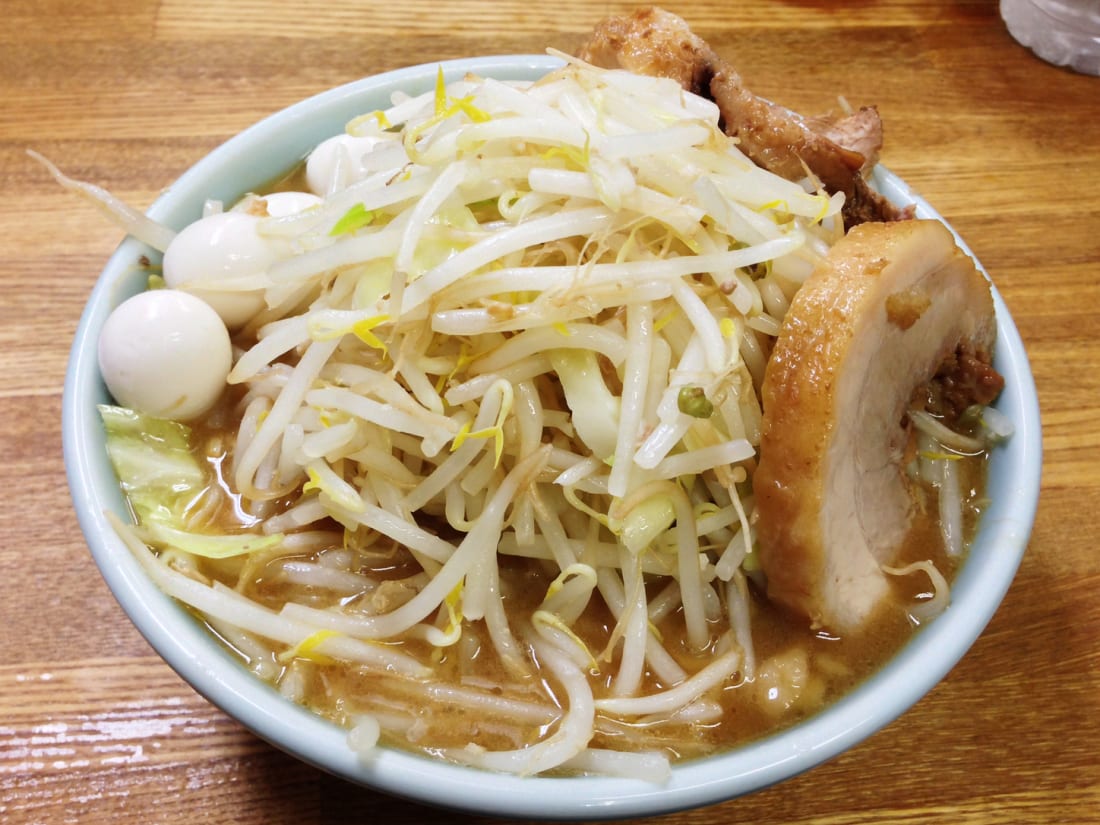
Shin Koganei branch
The ingredients differ from location to location, but in many cases are made in-house. The soup is generally a mix of tonkotsu (pork bone) and shoyu (soy sauce), but you can also get miso ramen (at the Funabashi store) and even curry ramen (at the Sagamiono shop.) The noodles vary in quantity and consistency, but you can vary your order somewhat. For example, someone who wants less might ask the cook for sanbun-no-ichi (a third of the usual) or for katame (firmer noodles).
When you do get your food, you may be asked “Niniku irimasuka?” (Do you want garlic?) You can ask for the garlic sukuname (small), futsu (regular), mashi (large), or mashi mashi (extra-large). You can also further customize your order and add extra abura (oil), more yasai (vegetables, usually a mix of cabbage and bean sprouts), and karame (soy sauce) in the aforementioned quantities. A typical topping order might be: “Niniku sukuname yasai mashi.” This huge amount of toppings usually results in an overflowing bowl which makes it difficult to even see the soup and noodles underneath.
Visit the Original Ramen Jiro
For serious ramen connoisseurs, a pilgrimage to Mita Honten in Tokyo’s Minato ward is a must. This is the original Jiro, located next to Keio University. It is a cramped, tiny shop, where customers have to step over one another to get a glass of water or use the bathroom. For this reason many people take a bottled drink into the shop with them. The soup is a bubbly gut-busting delight of salt and oil, made using the stores own special soy sauce. The noodles are thick and firm, and the chashu is almost two-thirds fat. It is tasty to be sure, but I have no shame in admitting I could not finish it all.
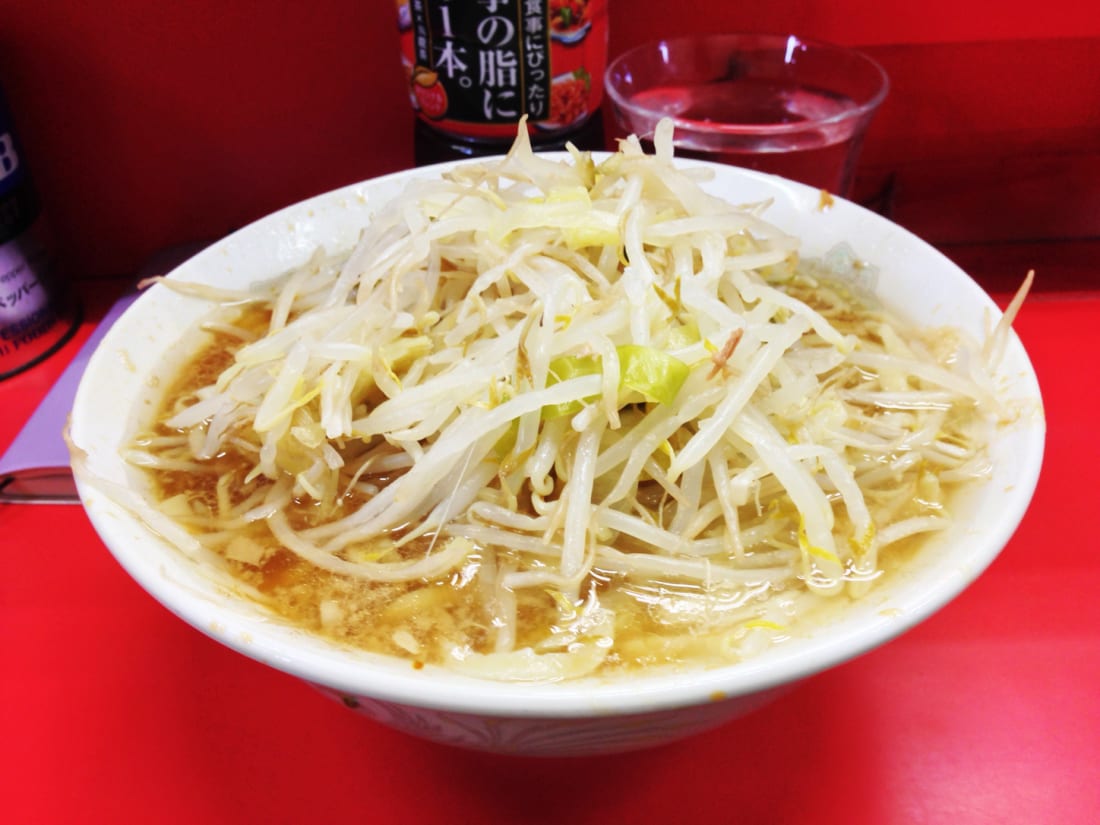
Ramen at Jiro’s Mita Honten branch
Other Recommended Ramen Jiro Restaurants
Other Jiro shops have their own appeal, such as the massive amount of toppings available at the trendy Hachioji store. These include cream cheese, six varieties of eggs, iruka (special flame-broiled chashu), and “BB” (gyofun, or fish powder). They give a noticeably smaller amount of veggies, but the serving of meat (even with their puchi, or extra small size) is enormous. The Nishidai shop on the other hand, uses a lighter soup that is much easier to eat. There was a reasonable amount of vegetables and meat, and the garlic wasn’t overpowering. Overall, this was a surprisingly balanced ramen that is recommended for first-timers. My personal favorite, however, is the Shin Koganei Jiro for its heartier tonkotsu-heavy broth and lean yet absolutely mouth-watering chashu.
Ramen Jiro is an exercise in culinary excess that isn’t for everyone. For Ramen aficionados however, it is an experience like no other that should be tried at least once during your time in Tokyo. Come hungry, and enjoy.
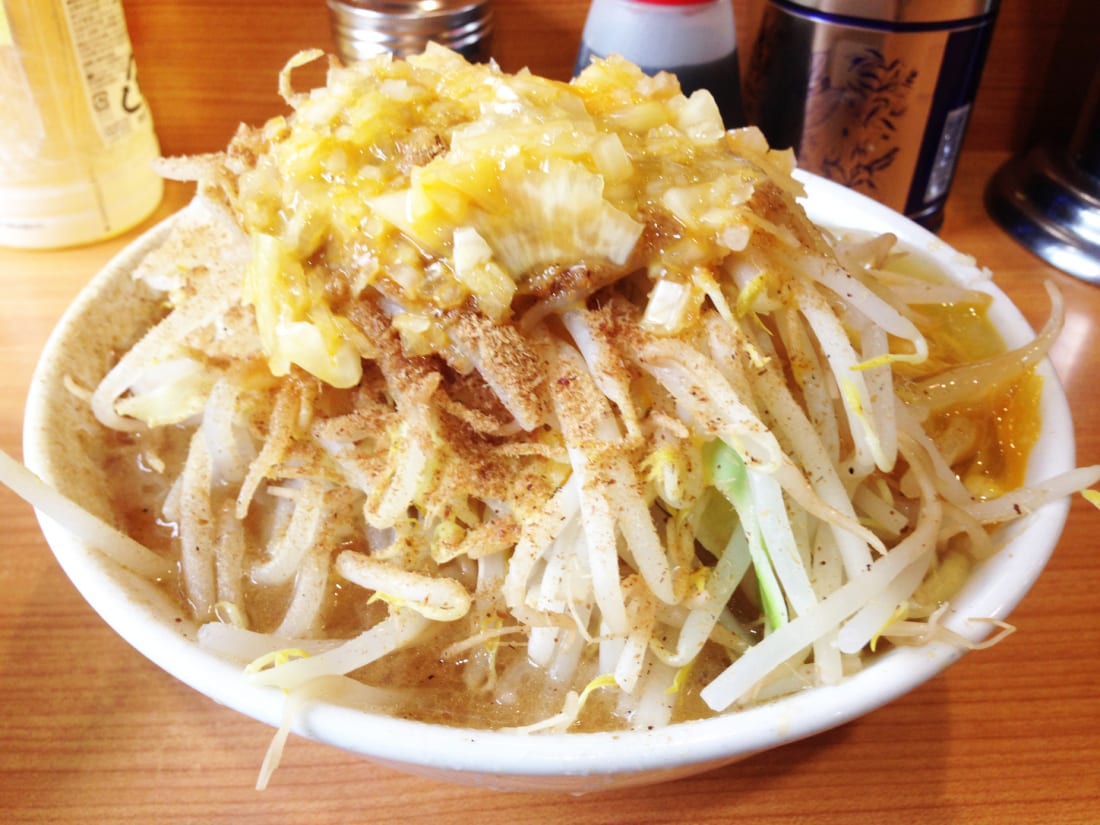
Ramen at Jiro’s Hachioji branch
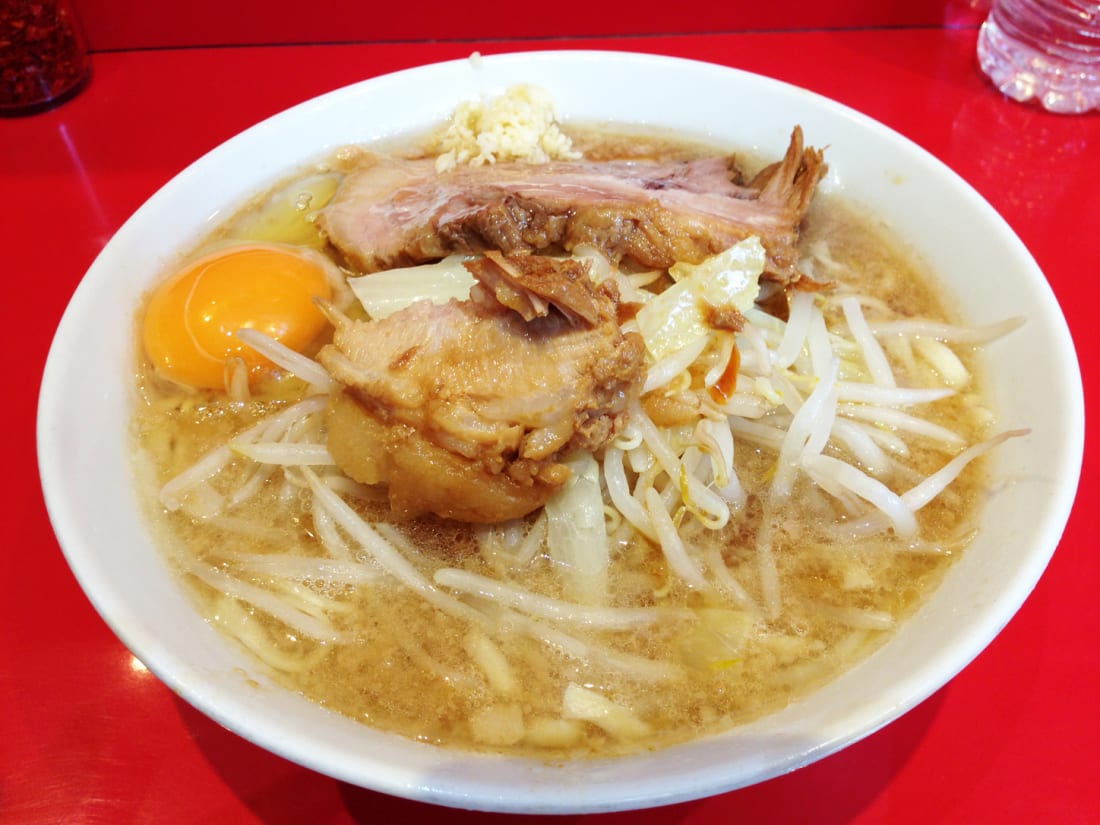
Ramen at Jiro’s Nishidai branch


